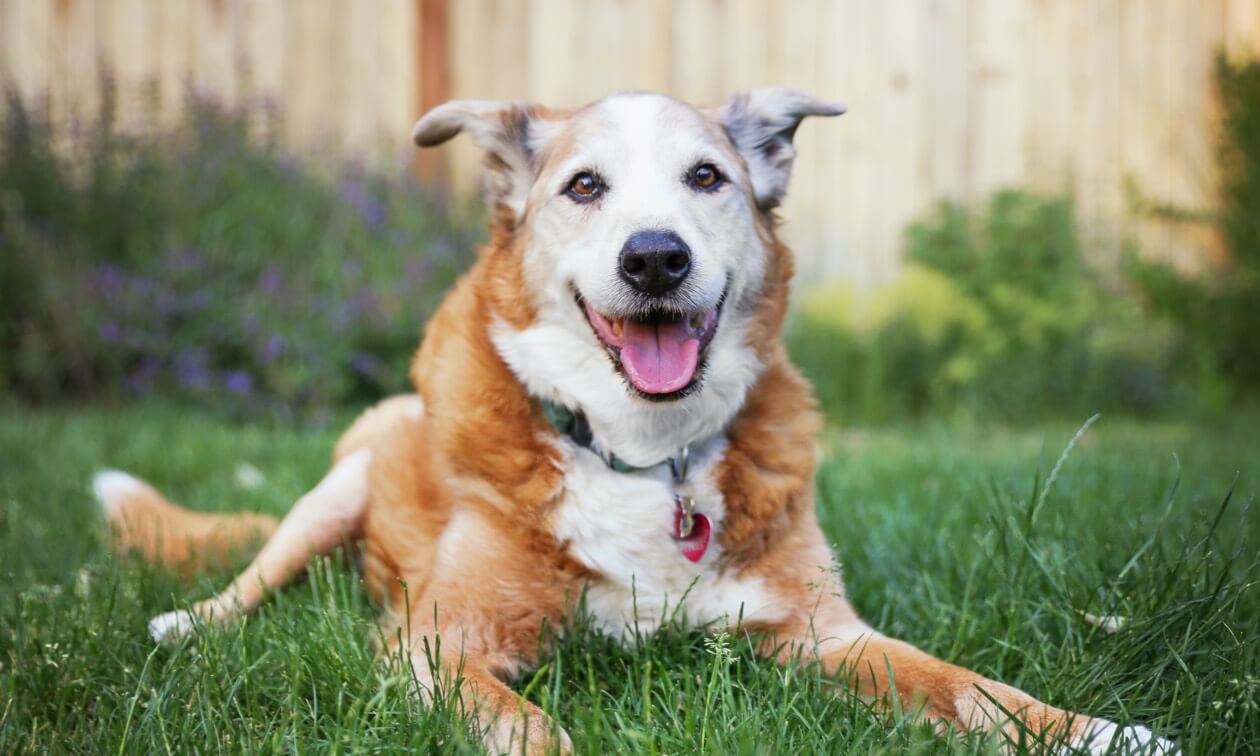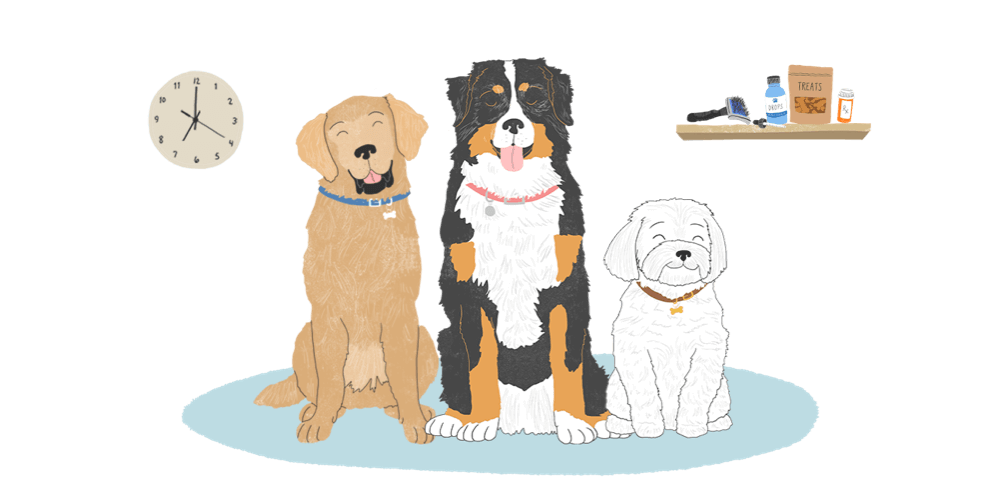There’s something special about caring for a senior dog. They’ve lived and learned a lot by this point. If they’ve been with you a while, you likely know each other well and have routines that bring you both comfort and joy. Aging also means your dog has changing needs. With proper attention and preparation, you can help them move more easily through their senior years.
What Age Is a Dog Considered a Senior?
When to classify a dog as a senior depends on their size, breed, genetics, and environmental conditions. Large breed dogs age more quickly than small breeds and are typically considered to be senior at about 6 to 7 years old. Small breeds aren’t considered a senior until they are 9 or 10 years old and medium breeds when they are 8 to 9 years old. When age-related issues start to set in, regardless of your pet’s actual age, they are a senior.
Physical and Behavioral Changes in Senior Dogs
As your dog enters their golden years, you may notice a few changes.
Appearance:
- Their facial fur will begin to turn gray.
- They may lose weight or gain weight more readily.
Behavior:
- You may see changes in the social relationships between your senior dog, the family, and other pets.
- There may be changes in their eating and drinking habits.
- Your once active dog may now be content to take it easy due to changes in mobility.
Tips to Help Your Senior Dog Around the Home
When it comes to caring for a senior dog, simple changes to your home can make them more comfortable. There are some simple ways to make your home more comfortable for your senior pup:
- Put down runners or mats on slippery floors to provide more traction and prevent slipping.
- Keep your dog’s nails and fur around their paw pads trimmed. Proper nail length gives them more traction and grip as they walk, and prevents discomfort from overly long nails.
- Train your dog to use a ramp or small stairs to get onto and off of furniture so they don’t jump up or off.
- Make sure they have lots of comfy and easily accessible resting places. Many senior dogs appreciate orthopedic dog beds or mats to ease achy joints.
Medical Changes in Senior Dogs
Besides the obvious physical and behavioral changes that occur from aging, there are also internal changes. Every organ system is affected by the aging process. Over time, organs begin to wear out and are susceptible to progressive damage. This is why your senior dog needs to have a check-up at least twice a year. The earlier issues are recognized and treated the more successful treatment will be, giving your dog a better quality of life for longer.
The most common health issues tend to be:
- Hearing loss
- Vision loss
- Cognitive dysfunction/dementia
- Arthritis
Helping Your Senior Dog Through Common Medical Issues
As dogs get older, they may encounter more health issues. These conditions don't have a cure, but there are things that you can do to help your dog through it.
Hearing Loss
As dogs age, they can gradually lose their hearing due to degeneration of the nerves in the ear. Unfortunately, there is nothing that can stop the process or prevent your dog from becoming deaf.
Since hearing loss is often gradual, the signs can go unnoticed. Early indications of hearing loss include:
- Not responding to commands
- Startling more easily
- Not noticing when people enter the room
- Not waking until touched
- Not responding to sudden noises
Some things you can do to help your dog adapt include:
- Teaching commands using hand signals
- Creating vibrations, such as lightly stomping feet, when you enter a room
- Turning lights on and off when entering a room
- Staying in their line of sight as you exit a room so they are aware you left
- Training them to your smell with a specific perfume or cologne
- Desensitizing them so they are comfortable with unexpected touching. For instance, immediately reward your dog with a treat when you touch them on the back gently
- Keeping them on a leash when on a walk
- Securing your yard since they can’t hear potential danger approaching
- Always having ID on your dog that states they are deaf
Vision Loss
Just as humans have vision loss as they age, so do dogs. It can occur gradually or suddenly. There are several causes of blindness in dogs.
- Cataracts (gradual)
- Glaucoma (usually gradual)
- Progressive retinal atrophy (gradual)
- Sudden acquired retinal degeneration (SARDS) (sudden)
If you notice any of the following signs, you should have your dog’s sight evaluated by a veterinarian:
- Bumping into things
- Avoidance of stairs
- Anxiousness in or avoiding new places
- Cloudy eyes
- Redness of the eye
- Redness and swelling of tissue surrounding the eye
Using their other senses, your dog can maneuver well through life. However, to make things easier for them, there are a few things you can do.
- Wear and have other pets wear tags or bells make noise so your dog knows where everyone is
- Keep pathways in the house wide and absent of any obstacles
- Create a walking routine for them to find their bed, food bowls, door, etc. Do not move furniture or other items once this is established
- Be aware of anything that could harm your dog at their level, such as table corners, and safety proof them
- Train voice cues to indicate when they’re approaching some type of obstacle or hindrance. For example, say “step” when they’re approaching stairs
- Consider using a special “bumper” type collar attachment to help prevent them from running into furniture or obstacles
- Be sure to keep them on a leash when outdoors
- Have proper ID tags that state your dog is blind
If your senior dog appears suddenly blind, this could be an emergency. Seek veterinary care immediately.
Cognitive Dysfunction Syndrome (CDS)/Dementia
Dogs can lose their cognitive function as they age. This means they are unable to process information about their environment or determine how to act. About 28% of dogs 11 to 12 years old have CDS, and this number increases to 68% for dogs 15 to 16 years old[1].
In the early stages, signs are subtle but with time become severe. Some common signs include:
- Disorientation
- Whining/barking for no reason
- Pacing
- Bathroom accidents
- Standing in corners
- Abnormal sleep habits
- Changes in family interactions
These may also be indicators of other health issues. Therefore consulting with a veterinarian is important for a proper diagnosis.
CDS has no cure, but there are specialized diets, medications, and supplements that have been found to be beneficial.
Arthritis
Arthritis is a slow and progressive disorder that can begin as early as one year of age. While inflammation is one of the primary causes of arthritis, obesity is one of the more common causes of chronic inflammation and extra stress on the joints — particularly with senior dogs.
While there is no cure, there are ways to manage your dog's OA pain and several things you can do to help slow the progression of arthritis and improve your dog’s quality of life. It is critical to talk to your veterinarian about best ways to provide consistent pain management early as possible.
- Maintain your dog at an ideal body weight
- Exercise them regularly
- Prescription diets for arthritis
- Cold laser therapy
- Acupuncture
- Pain medications
- Physical therapy
Caring for a senior dog may come with complications, but you wouldn't trade your pup for anything. Whether it's physical and behavioral changes, or something more serious like a medical condition, you can help your pup by reducing their pain and making their life more comfortable.
ZPC-01839R1
- Today’s Veterinary Practice. Management of Dogs and Cats with Cognitive Dysfunction. https://todaysveterinarypractice.com/management-of-dogs-and-cats-with-cognitive-dysfunction/. Accessed February 1, 2022.



